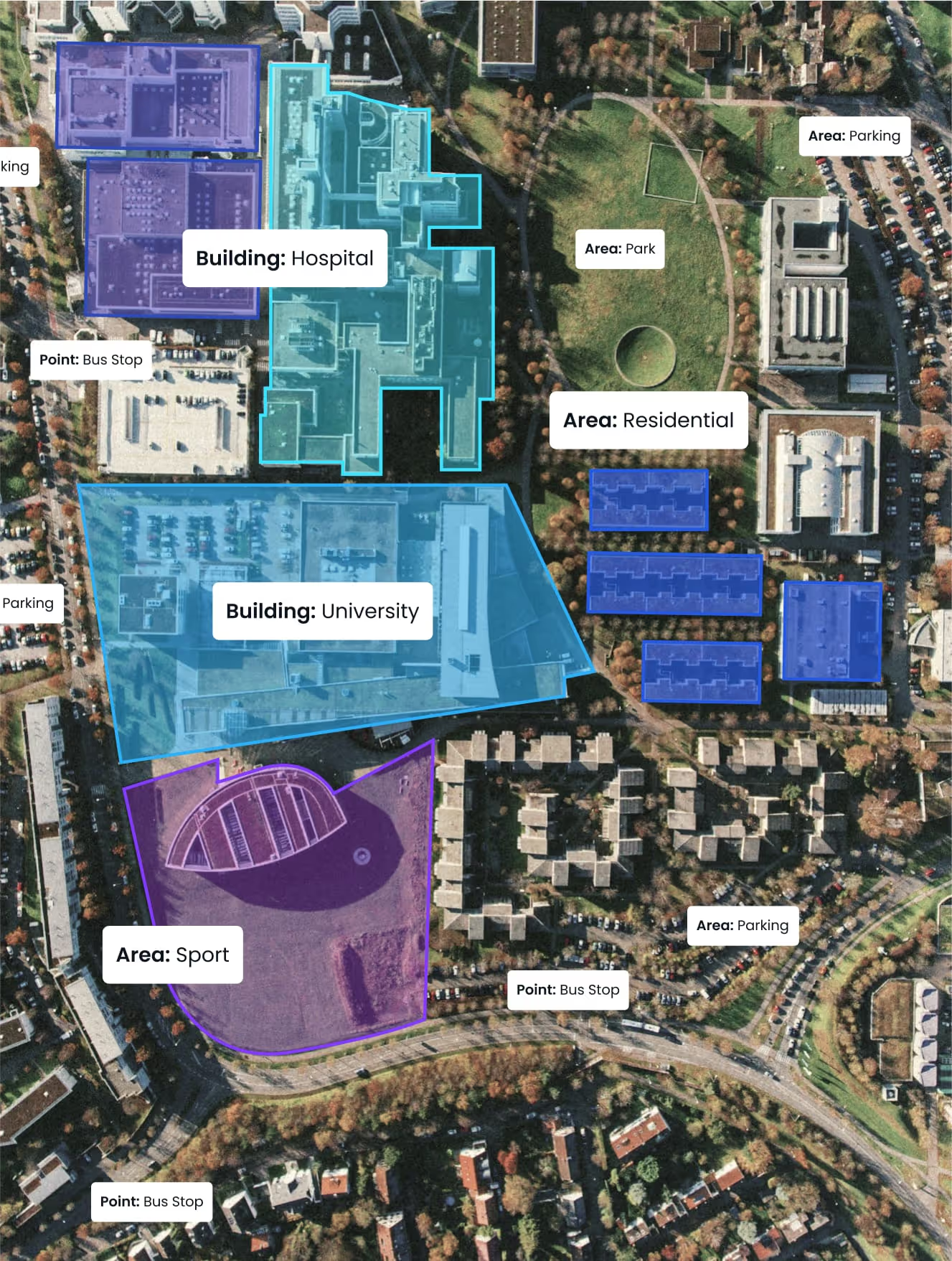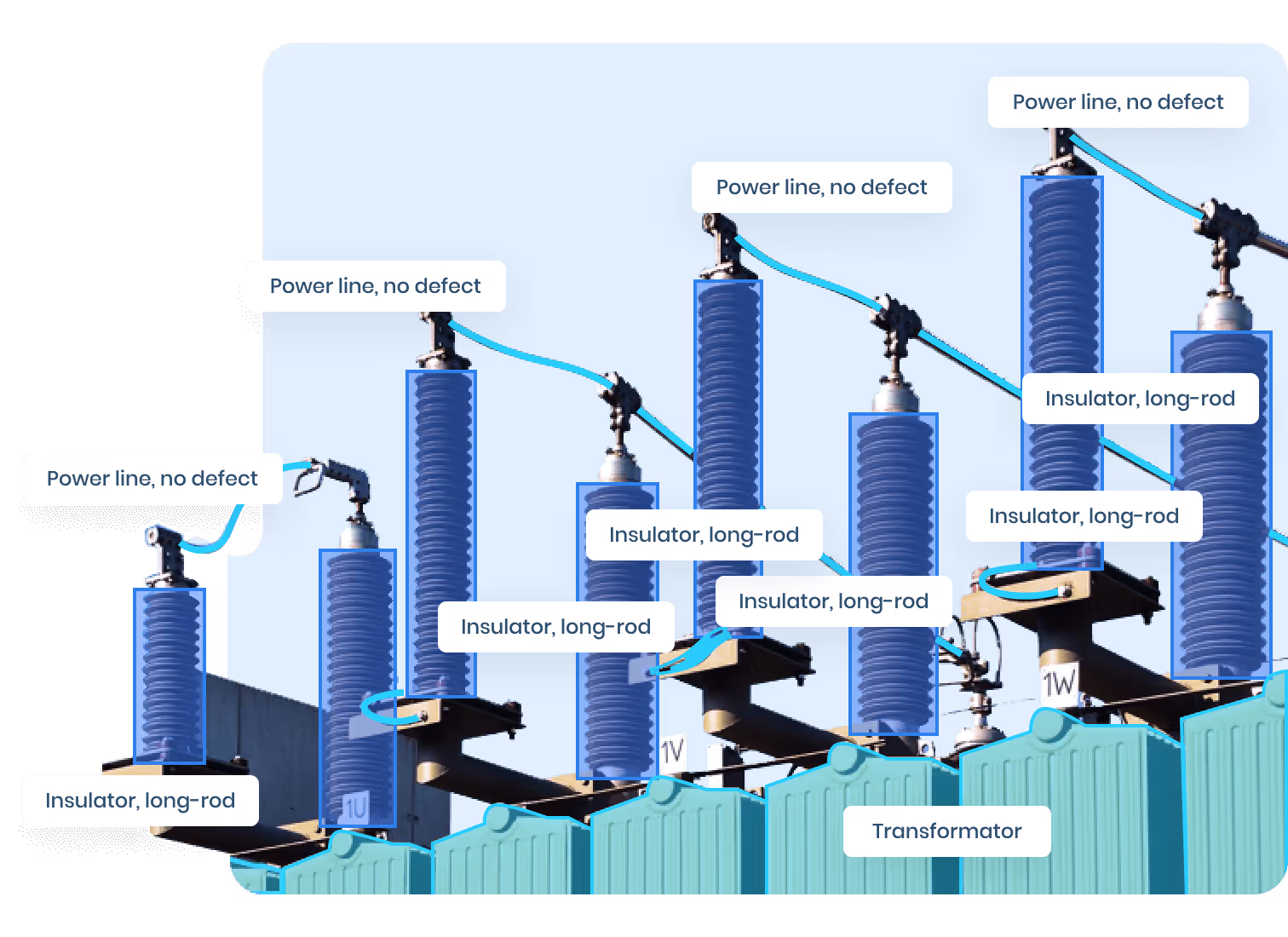Introduction: Why Medical Image Annotation Matters
Artificial intelligence is revolutionizing medical diagnostics, especially in radiology. MRI (Magnetic Resonance Imaging), CT (Computed Tomography), and X-rays generate rich visual data, but without precise annotation, AI cannot interpret them accurately. Annotation isn’t just about drawing boxes—it involves domain expertise, clinical context, and an understanding of radiological subtleties.
With radiology AI models now supporting critical use cases like tumor detection, organ segmentation, fracture diagnosis, and lung screening, high-quality medical image segmentation are more important than ever.
🧬 Accurate annotations = Better AI predictions = Safer patient outcomes.
🔑 Key Concepts in Radiology Annotation
To annotate medical imaging data effectively, it's critical to understand the technical, clinical, and procedural foundations that guide annotation in radiology AI. These key concepts ensure consistency, quality, and interoperability across teams, tools, and AI pipelines.
1. Modality-Specific Characteristics
Each imaging modality brings unique data structures and visualization formats that impact how annotations should be performed:
- MRI (Magnetic Resonance Imaging): Offers excellent soft tissue contrast; used for brain, spine, joints, and abdominal organs. Requires multi-sequence interpretation (e.g., T1, T2, FLAIR).
- CT (Computed Tomography): Captures cross-sectional images of bone, soft tissue, and blood vessels. Supports 3D volume annotation across axial slices.
- X-ray: Fast, cost-effective 2D imaging, typically used for bones, chest, and dental applications. Lower resolution but widespread in emergency and primary care settings.
Each modality may also differ in windowing, contrast agents, artifacts, and anatomical clarity—factors that affect annotation detail.
2. DICOM Format and Metadata Usage
Radiological data is almost always stored in DICOM (Digital Imaging and Communications in Medicine) format. This isn’t just about the image—it includes rich metadata such as:
- Patient age, sex, and anonymized ID
- Scan time and location
- Modality type and parameters (e.g., slice thickness, contrast phase)
Understanding DICOM metadata is crucial for:
- Matching studies across time (e.g., follow-up scans)
- Avoiding duplicate or corrupted images
- Filtering data by demographic or pathology criteria
Tools that allow annotation directly on DICOM viewers (like OHIF or 3D Slicer) streamline the process.
3. Annotation Granularity Levels
Annotations can be performed at different levels, depending on the task and expected AI output:
- Global labels (e.g., pneumonia: yes/no)
- Bounding boxes (e.g., suspected lesion location)
- Polygons or masks (e.g., segmentation of a tumor)
- Keypoints or landmarks (e.g., vertebrae corners, organ centers)
- Multi-slice/volumetric annotations (e.g., 3D brain tumors)
Choosing the right granularity is essential for training AI models that are both performant and clinically interpretable.
4. 3D Annotation in Multi-Slice Imaging
MRI and CT are volumetric in nature—each scan consists of a stack of 2D slices forming a 3D view. Annotators need to:
- Maintain shape and structure continuity across slices
- Label organs and abnormalities as volumes, not disconnected images
- Use software that supports axial, sagittal, and coronal views simultaneously
Failure to account for this leads to poor volumetric segmentations, reducing model accuracy in real-world deployments.
5. Inter-Rater Agreement and Annotation Confidence
Even among radiologists, interpretation can vary. Therefore, measuring inter-rater agreement is key:
- Use Cohen’s kappa, Fleiss' kappa, or Dice coefficient to measure overlap.
- Implement tiered confidence scoring (e.g., 1 = uncertain, 3 = confident).
- Consider consensus mechanisms: majority voting, senior review, or arbitration.
Consistent annotation doesn’t just improve training—it also gives insight into how certain or uncertain radiologists themselves are, which can later be used in uncertainty-aware AI systems.
6. Clinical Context and Label Relevance
Annotators must understand why a label is needed—not just where. For example:
- In oncology: Tumor grade or stage may affect annotation criteria.
- In cardiology: Identifying calcification or plaque types may depend on contrast phase.
- In pediatrics: Growth stages can alter anatomical appearance.
Annotations that don’t align with clinical interpretation goals result in AI that’s clinically meaningless.
Best Practices for Annotating MRI, CT, and X-Rays
1. ✅ Involve Domain Experts (Radiologists and Specialists)
AI models trained on poorly annotated data pose real medical risks. Always involve certified radiologists or specialists in the annotation pipeline:
- Train non-clinical annotators using gold-standard examples.
- Use specialists for complex annotations (e.g., brain tumors, interstitial lung disease).
- Have multiple experts review annotations for high-risk cases.
🔗 See how Mayo Clinic integrates radiologist insight into AI
2. 🖼️ Choose the Right Annotation Type by Use Case
Different imaging tasks require different annotation types:
Involves identifying and segmenting tumor regions on imaging scans.
🖼️ Imaging modalities: MRI, CT
🏷️ Annotation type: Semantic segmentation (pixel-wise labeling of tumor regions) / Synthetic data
Focuses on localizing bone fractures for diagnostic assistance.
🖼️ Imaging modalities: X-ray, CT
🏷️ Annotation type: Bounding boxes around fracture zones
Aimed at detecting areas of opacity in the lungs, often associated with infections or fluid buildup.
🖼️ Imaging modalities: X-ray, CT
🏷️ Annotation type: Polygons or segmentation masks for precise delineation
Used to identify and label individual vertebrae along the spine.
🖼️ Imaging modalities: MRI, CT
🏷️ Annotation type: Keypoints (center of vertebrae) combined with vertebral labels
Measures the area or volume of lesions to track progression or treatment response.
🖼️ Imaging modality: MRI
🏷️ Annotation type: Pixel-wise masks to capture lesion boundaries accurately
Tip: Choose tools that support 3D volume visualization for slice-based annotations.
3. 📚 Use Standardized Label Taxonomies
Avoid inconsistencies by adhering to standardized taxonomies:
- Use RadLex (Radiology Lexicon) or SNOMED CT for consistent labeling.
- Create internal guidelines for your label hierarchy, especially if combining multiple datasets.
- Maintain a label map dictionary with definitions and examples.
4. ⚙️ Select Tools Designed for Medical Imaging
General-purpose annotation tools often fall short in radiology. Prioritize platforms that:
- Support DICOM format and metadata handling.
- Allow slice-by-slice navigation (especially for CT/MRI).
- Provide windowing/leveling for contrast adjustment.
- Enable 3D volume labeling and auto-segmentation suggestions.
Recommended tools:
5. 🧪 Incorporate Gold-Standard Datasets
Start with expert-validated datasets to benchmark your annotation accuracy:
- Use public datasets like RSNA Pneumonia Detection Challenge (X-ray) or BraTS (MRI brain tumor segmentation).
- Validate new annotation teams against gold-standard references.
- Regularly audit annotations for label drift.
🔗 Access BraTS datasets for brain tumor segmentation
6. 🔁 Build Iterative Feedback Loops
Annotation is rarely perfect the first time. Create feedback cycles between:
- Annotators
- Radiologists
- ML engineers
How?
- Use a QA checklist for each batch.
- Visualize annotation disagreement.
- Review model performance on annotated data to refine guidelines.
7. 🛡️ Ensure Data Privacy & Compliance
Working with real medical scans means managing patient-identifiable data.
- Use de-identified DICOM data wherever possible.
- Follow HIPAA (US) or GDPR (EU) requirements strictly.
- Document data lineage: who annotated what, when, and how.
8. 🌍 Ensure Dataset Diversity
An AI model trained only on one demographic or device type won’t generalize.
- Balance data across age, gender, ethnicity, and disease stages.
- Use scans from different hospitals, manufacturers, and machines (e.g., GE, Siemens, Philips).
- Track imaging artifacts or noise variations.
Diversity = Robustness. Bias in training leads to bias in diagnosis.
9. 🔍 Optimize for Clinical Relevance
Every annotation should map to a diagnostic or treatment decision:
- For tumors, define the margin, type, and size.
- For lung nodules, distinguish between benign vs. suspicious.
- Include secondary findings where possible (e.g., fluid buildup, calcification).
Use clinical scoring systems like BI-RADS (breast imaging) or Lung-RADS where applicable.
10. 🔬 Leverage Pre-Annotations and AI Assistance
Speed up workflows with semi-automated tools:
- Use AI models to pre-segment tumors or organs.
- Let annotators refine suggestions instead of drawing from scratch.
- Apply active learning—have models surface uncertain predictions for review.
⚡ Tools like MONAI Label support interactive labeling workflows with deep learning integration.
11. 📏 Establish Clear QA Metrics
Define what quality means for your annotation project:
- Dice coefficient and IoU for segmentation accuracy
- Inter-annotator agreement (e.g., Cohen’s kappa)
- Number of corrections per 100 cases
Regularly report QA metrics to improve transparency and accountability.
12. 🧩 Support Multi-Modality and Multi-Series Inputs
In radiology, decisions often rely on multiple imaging views:
- For CT, axial + sagittal + coronal planes
- For MRI, T1, T2, and FLAIR series
- For X-rays, lateral + frontal view
Tools should allow synchronizing annotations across views or series for consistency.
13. 👥 Manage Annotation Workforce Smartly
Annotation pipelines require coordination:
- Assign tasks based on specialty (e.g., neuro vs. thoracic radiology)
- Use version control for edits and corrections
- Monitor productivity without compromising quality
Consider outsourcing repetitive annotations to trained teams, while keeping sensitive/complex ones in-house.
14. 🛠️ Maintain a Living Annotation Guideline
Don’t treat annotation instructions as static PDFs. Instead:
- Host living documents (e.g., Notion, Confluence) with examples.
- Update after each QA review cycle.
- Embed screenshots and edge cases to clarify ambiguity.
🚀 Common Pitfalls to Avoid
- Over-generalized labels – e.g., labeling "tumor" instead of specifying type.
- Ignoring slice continuity – 2D masks that don’t align across CT/MRI slices.
- Inadequate resolution – downsampling scans too much for faster annotation.
- No QA step – skipping validation leads to error propagation.
- Unbalanced datasets – failing to cover rare pathologies or demographics.
🧭 Real-World Use Cases & Emerging Trends
As radiology AI evolves, annotation practices are adapting to meet new diagnostic frontiers and emerging technological capabilities. Let’s explore the most impactful use cases and trends shaping the future of radiology annotation.
🧠 1. Brain Tumor Segmentation on MRI (Gliomas, Metastases, etc.)
Brain MRIs are among the most annotation-intensive datasets due to the complex morphology of tumors and the need for precise boundary identification. Use cases include:
- Pre-surgical planning for glioblastoma resection
- Post-treatment monitoring for tumor recurrence
- Differentiation between tumor and edema using multi-sequence MRI (T1/T2/FLAIR)
The BraTS Challenge has led to advanced segmentation models, but those models only work well when trained on accurate 3D volumetric annotations.
🫁 2. COVID-19 Lung Infection Detection on Chest X-ray and CT
During the pandemic, medical imaging became a rapid triage tool to detect:
- Ground-glass opacities
- Pulmonary consolidations
- Interstitial markings
These findings had to be rapidly annotated for AI models, leading to the release of public datasets like COVIDx and SIRM COVID Database.
AI-driven triage models trained on annotated X-rays helped overwhelmed hospitals prioritize critical care.
🦴 3. Musculoskeletal X-ray Interpretation (Fractures, Arthritis, Joint Space)
X-ray interpretation is often performed in high-pressure settings like emergency rooms, and annotation is pivotal to AI applications that support:
- Fracture detection (e.g., hip, wrist, shoulder)
- Osteoarthritis grading
- Joint replacement planning
Annotation strategies include:
- Marking anatomical landmarks for joint angles
- Drawing fracture lines or shading cortical bone disruptions
- Classifying severity based on visual scales (e.g., Kellgren–Lawrence)
Projects like MURA (Stanford's musculoskeletal radiograph dataset) provide open-access images but still lack high-quality structured labels—highlighting ongoing annotation challenges.
🧬 4. Oncology Treatment Planning with Radiomics
AI is now being used not just to detect lesions, but to quantify their texture and biological behavior via radiomics. This requires extremely precise annotations for:
- Tumor borders
- Shape descriptors
- Heterogeneity mapping (e.g., pixel intensity patterns)
For example, in lung cancer treatment, radiomics features derived from well-annotated CTs can help predict:
- Response to chemotherapy
- Likelihood of metastasis
- Overall prognosis
📘 Learn more: Radiomics in precision oncology
👶 5. Pediatric Imaging with Developmental Variability
Annotating pediatric CTs or MRIs is uniquely challenging:
- Bone and organ structures change rapidly with age
- Pathologies may present differently than in adults
- Pediatric radiation exposure makes data rarer
Special annotation protocols are needed for:
- Congenital abnormalities
- Developmental delays
- Rare genetic syndromes
AI models trained on adult datasets often underperform in pediatric cases, further emphasizing the need for age-specific annotations.
🦠 6. Multi-Organ Segmentation in Abdominal CT for General AI Assistants
The growing trend is toward foundation models for radiology: large models trained to identify multiple organs, pathologies, and landmarks. Projects like TotalSegmentator or Project MONAI aim to create universal models by leveraging:
- Consistently annotated multi-organ datasets
- 3D voxel-level segmentation
- Cross-hospital standardization
These use cases require broad, cross-sectional annotation pipelines that combine automation, human-in-the-loop QA, and federated learning.
🌐 7. Telemedicine and AI Triage in Low-Resource Settings
In rural or underserved regions, AI can act as a first-pass diagnostic assistant. But to be effective, the models must be trained on data that reflects:
- Local disease prevalence (e.g., tuberculosis, dengue complications)
- Low-resolution or portable imaging devices
- Varying image quality and formats
Global health annotation projects like Radiological Society of South Africa’s TB dataset are working toward equity-aware annotation practices.
🔗 Learn about radiomics and its role in AI-powered diagnosis
🔚 Conclusion: Annotation Quality Defines Diagnostic Accuracy
Training radiology AI isn’t about quantity—it’s about precision, consistency, and clinical understanding. Following these best practices will help your team:
- Reduce model bias
- Improve clinical applicability
- Minimize annotation errors
- Accelerate model deployment
Whether you're labeling thousands of lung X-rays or segmenting complex brain tumors, annotation quality is the backbone of trustworthy AI in radiology.
📣 Build Your Radiology Dataset with DataVLab
Need help building high-quality radiology datasets? At DataVLab, we combine medical expertise with robust annotation workflows tailored for MRI, CT, and X-ray AI models. From DICOM handling to gold-standard QA, we’ve got your medical imaging pipeline covered.
👉 Get in touch with our medical AI experts today and let’s build safer, smarter healthcare models together.

.avif)



